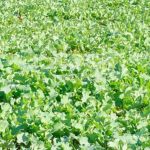Vegetative propagation is the process of creating new plants from various sources including seeds, stem, fruit, or even any small part of a parent plant. There are two kinds of plant propagation – sexual and asexual. In sexual propagation, the egg and pollen from two different parent plants are fused together to get a resultant third plant. It has its own advantages and disadvantages.
What is vegetative propagation?
Asexual propagation otherwise called as vegetative propagation involves sowing a part of a parent plant to make it regenerate itself into a new plant. Mostly stem, leaves, and roots are used in the process. These plants will continue to grow in the same pattern without altering the genes unless the weather and soil conditions remain the same. A typical example of asexual propagation is the growth of banana plant where seeds do not play a role in growing a new plant. It is important to note that asexual or vegetative propagation can also be artificially achieved.
There are six methods involved in asexual or vegetative propagation which are cutting, layering, division, tissue culture, budding, and grafting.
- Cutting: This involves cutting a small part of a parent plant and planting it in the soil to regenerate the entire plant again.
- Layering: A small branch of a parent plant is bent and covered with soil. In course of time the branch will start rooting, and then this branch will be cut off to be grown as an individual plant.
- Division: It involves dividing a parent plant from the root and planting them in a different place that has already been prepped. This is more suitable for perennial plants.
- Tissue culture: Plants are grown in an artificially created sterile environment. This is an advanced technique mostly used for commercial purposes.
- Budding: The rootstock of plant with a single bud is cut and planted to grow into a new plant.
- Grafting: This is a complex process involving cutting a twig of a parent plant and conjoining it with the stem of a different plant so that they join to act as one plant.
Pros:
- New plants will only contain the genes of the parent plant and hence considered as clones. So once you find a plant with traits that you are looking for, you can grow them indefinitely
- Commercially more beneficial to achieve quality over quantity
- Reproduction takes place rapidly
- Plant embryo is enough to grow a whole new plant.
Cons:
- Asexully produced plants are more susceptible to stress. If a plant is affected with some disease, the entire chain will be lost. You need to have a bank of plants and parts, to make sure you are safer
- They do not live long compared to plants grown from seeds
- You cannot produce new varieties with the same qualities that you had already gotten. Of course, you can keep looking for one, which will consume too much of your time
- This has a negative impact on the biodiversity
- This is more expensive than sexual propagation and you need trained workers to grow them







